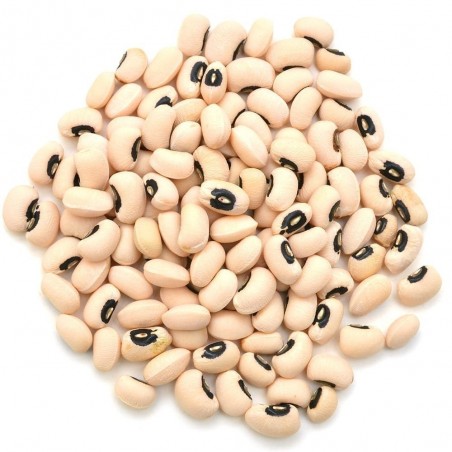
Casaba Turkish melon seeds
Casaba Turkish melon seeds
Price for Package of 10 seeds.
The Casaba melon is unique in its appearance, thus once identified it is easily recognized. It has an ovoid to the round shape that comes to a point at its stem end. When ripe its skin will be
Casaba Turkish melon seeds
Price for Package of 10 seeds.
The Casaba melon is unique in its appearance, thus once identified it is easily recognized. It has an ovoid to round shape that comes to a point at its stem end. When ripe its skin will be a golden yellow with hints of green throughout. Its thick rind has irregular, shallow furrows running from end to end. The creamy pale green to white flesh is mild and sweet in flavor with nuances of Asian pear. Unlike other muskmelon varieties its aroma is very subtle and its skin is void of the typical netting.
Seasons/Availability
Casaba melons are available summer through the early winter.
Current Facts
Botanically known as Cucumis melo var inodoras and a member of the Cucurbitaceae family, the Casaba melon is a unique variety of muskmelon. They belong to the winter melon group, which also includes honeydew melons. The winter melon classification is attributed to their growing season, their hardiness and long shelf-life. Casaba melons are a parent melon along with a cantaloupe variety to the Crenshaw melon.
Applications
Casaba melons are best utilized in fresh preparations. Its flavor will work well in both sweet and savory salads. Pureed it can be added to cold soups, smoothies, sorbets, sauces and cocktails. The Casaba melon pairs well with curry, cucumber, chilies, lime, red onion, mint, basil, coconut milk, ricotta, mozzarella and cottage cheese. An excellent keeper once ripe uncut Casaba melon will keep at room temperature for up to two weeks. Refrigerate cut up melon in a covered container up to three days.
Geography/History
The Casaba melon was introduced to the United States in the late nineteenth century when it was imported from Kasaba, Turkey. Unlike several melon varieties, the Casaba does not "slip" from the vine at maturity. The fruits are harvested by cutting the stem when the melons are reasonably mature and then held in storage until the blossom end becomes soft.
| HEIRLOOM ? | Yes |
|---|---|
| Organic Seeds ? | Organic Seeds |
| Organic/natural ? | Organic/Natural: Yes |
| Sowing depth ? | Sowing depth 5 mm |
| Válogatott magok? | Válogatott magvak |
| Origin of seeds ? | Seeds imported from: Turkey |
| Origin Country of Variety ? | Variety from: Turkey |
| Scientific name: | Cucumis melo |


Your review appreciation cannot be sent
Report comment
Report sent
Your report cannot be sent
Írd meg véleményedet
Review sent
Your review cannot be sent
🌍 Globális szállítás az EU-ból
Világszerte szállítunk az Európai Unióból ajánlott küldeményként, átvételi visszaigazolással.
📦 Csomagkövetés
A csomagod követéséhez jelentkezz be a fiókodba, majd menj a Rendeléstörténet > Részletek menüpontra, ahol megtalálod a követési számot.
Nemzetközi követés: 17Track
RGxxxxxxHR típusú számok esetén: Posta.hr követés
🕒 Kérjük, várj legalább 24 órát a feladás után, hogy a követési adatok elérhetővé váljanak.
⚠️ Fontos tudnivalók
Utánvét nem elérhető.
Rendszeresen ellenőrizd a spam vagy kéretlen mappát az e-mail fiókodban az értesítésekért.
Kérjük, kizárólag a weboldalunkon található kapcsolati űrlapot használd.
Közvetlen e-mailekre nem biztos, hogy válaszolunk.
📱 Telefonszám megadása kötelező
Rendeléskor kötelező megadni a mobiltelefonszámodat az országkóddal együtt.
Példa: +36 30 123 4567
🚚 Szállítási feltételek
A nyomon követett csomag átvételekor átvételi aláírás szükséges.
Ne rendelj, ha:
postafiókba szeretnéd a csomagot
nem leszel otthon a kézbesítéskor
a csomagot a szomszédnak szeretnéd átadni (❌ ez nem lehetséges)
📬 Ha postafiók címet adsz meg, és a csomag elveszik, nem jár visszatérítés.
↩️ Csomag visszaküldése és újraküldés
Ha bármilyen okból visszaküldik a csomagot:
Visszaküldési díjat kell fizetned: 2 €
Valamint az újraküldés költségét is
⏱ Késések és nyomon követés
Ha a csomag még mindig a feladónál szerepel a követésben, az azt jelenti, hogy úton van.
A legfrissebb információkért keresd meg a helyi postahivatalt a követési számmal.
Nem vagyunk postaszolgáltató, így a csomagot nem tudjuk helyetted követni.
Nem vállalunk felelősséget a szállítás időtartamáért.
🔍 Eltűnt csomag ügyében vizsgálatot csak 30 nappal a feladás után indíthatunk.
✈️ Szállítási opciók
| Szállítás típusa | Feldolgozási idő | Biztosítás | Lehetséges késések | Megjegyzés |
|---|---|---|---|---|
| Standard | 7–10 munkanap | ❌ | 7–14 munkanap | Legolcsóbb opció |
| Prioritás | 1–7 munkanap | ❌ | 3–10 munkanap | Prioritásos feldolgozás – nem feltétlenül gyorsabb szállítás |
| Biztosított | 1–7 munkanap | ✅ | 3–10 munkanap | Visszatérítés elvesztés esetén (max. 150 € értékig) |
🕒 Várható szállítási idő:
Európai Unión belül: 3–20 munkanap
Világszerte: 5–30 munkanap
USA példák: 27, 22, 19, 17, 13 nap
💳 Fizetési módok
💶 Banki átutalás (SEPA / IBAN / SWIFT-BIC)
A fizetés leírásában kötelező megadni a rendelési számot (pl. SGS-19811702).
Ha hiányzik ez az adat, késedelmet vagy rendelés törlést okozhat.
Ha a befizetés nem érkezik meg 7 napon belül, a rendelést automatikusan töröljük.
🅿️ PayPal
Csak euróban történő fizetést fogadunk el PayPal-on keresztül.
Kérjük, a fizetéskor válaszd az eurót mint pénznemet.
💳 Bankkártyás fizetés
Kártyás fizetés a weboldalunkon keresztül: Exotic Seeds Store
Elfogadott kártyák: Visa, MasterCard, American Express, Diners Club, UnionPay, JCB, Discover stb.
💡 A vásárló viseli az esetleges tranzakciós díjakat.
Kérjük, küldd el a fizetés igazolását a gyorsabb feldolgozás érdekében.
📅 Egyéb információk
Hétvégén (szombat, vasárnap) nem dolgozunk fel rendeléseket és nem szállítunk.
Mindig olvasd el a fontos közleményeket a weboldalunkon (ünnepnapok, speciális feltételek stb.).
📫 Fontos:
Ne küldj közvetlen e-mailt nekünk. Csak a weboldalunkon lévő kapcsolati űrlapot használd.
Related Products











